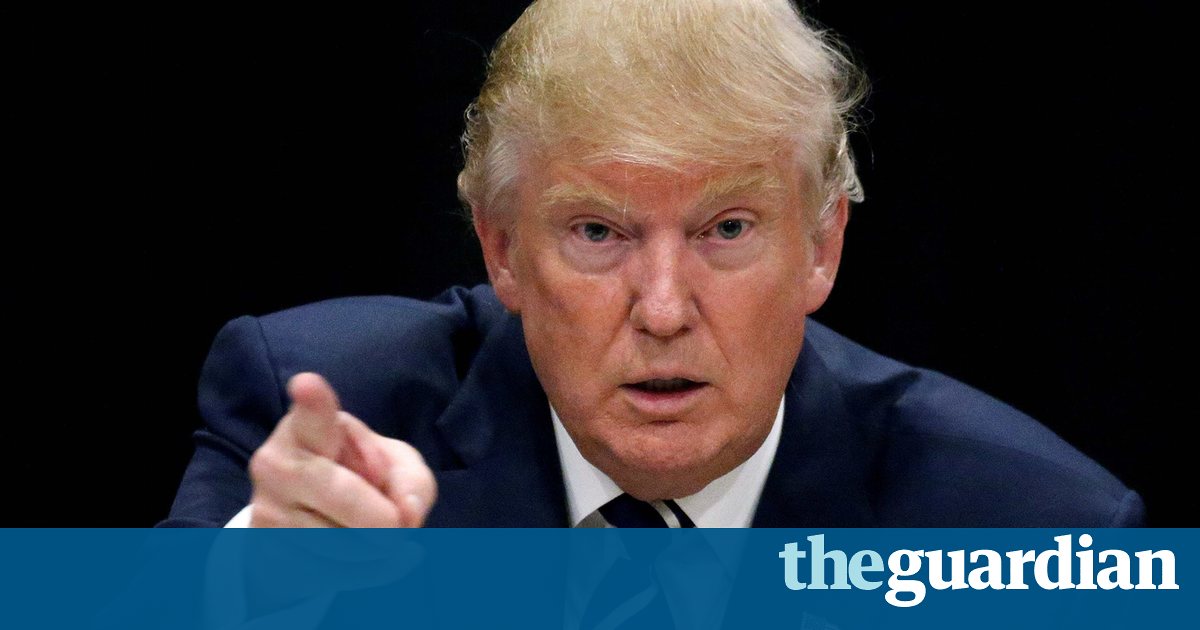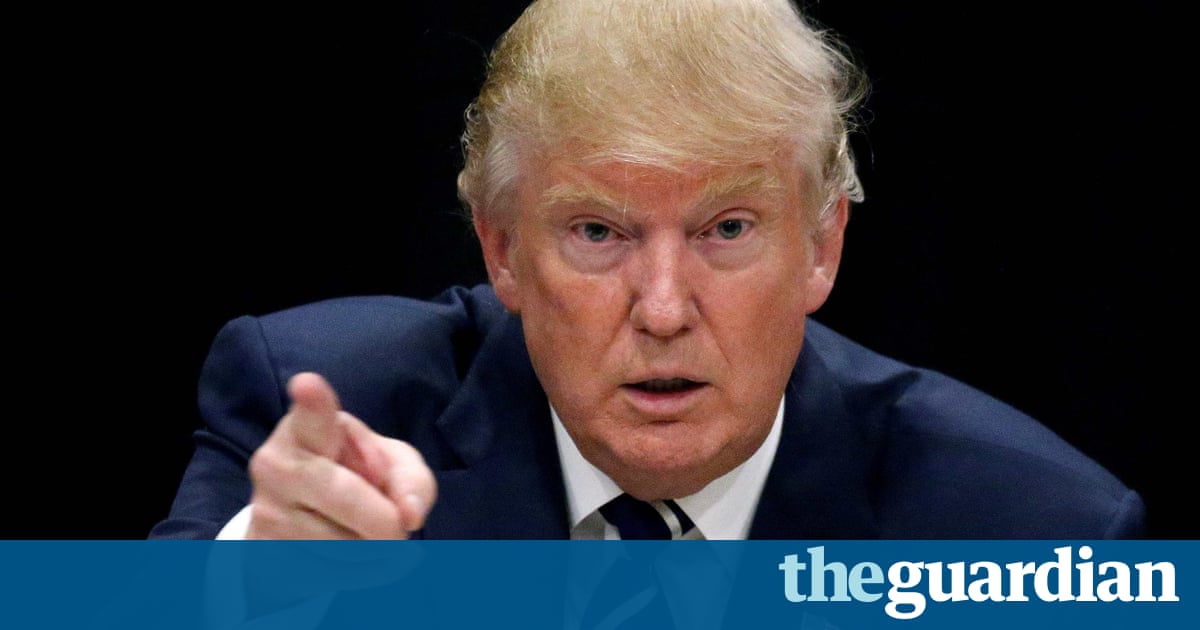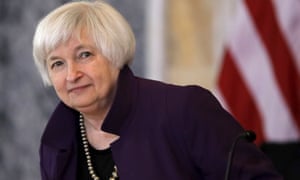Donald Trump’s economic policies could go badly wrong but not soon enough

We cant bank on him being a one-term president. In fact growth could actually accelerate for a couple of years before the real effects kick in

November 2020: the results of the US presidential election are in. The Democrat candidate, Elizabeth Warren, fought bravely but the outcome was never really in doubt. With the economy booming, Donald Trump is returned to the White House in a landslide. His pitch to voters has been simple: I kept my promise. America is great again.
For Trumps opponents, this is the nightmare scenario. Still stunned by Hillary Clintons defeat, they have taken comfort from their belief that the billionaire property tycoon will prove to be a one-term president exposed as a dangerous charlatan as soon as he takes office. This may, indeed, prove to be the case. Trumponomics is by no means a fully thought-through programme. The inconsistencies are obvious, as are the dangers. It could all go horribly wrong. But Trump may well have won a second term by the time it does.
Paul Krugman, the Nobel prize-winning economist and one of Trumps most vociferous critics, suggested in the immediate aftermath of that horrible election night that a global recession was imminent.
Now the dust has had time to settle, Krugman admits that his disappointment got the better of him. Trumpism will have dire effects, but they will take time to become manifest. In fact, dont be surprised if economic growth actually accelerates for a couple of years.
Steve Keen, economics professor at Kingston University, thinks Trumps first term will see a sharp acceleration in US growth to perhaps 4% a year. By the time any of the nasty side-effects become apparent, he says, Trump will have been safely re-elected.

The president-elects economic plan is an eclectic mix of ideas culled from previous occupants of the White House. Half a trillion dollars to improve Americas creaking public infrastructure is a throwback to the 1950s, when Dwight Eisenhower was responsible for the creation of the interstate highway network. A 10% increase in troop numbers looks like the military Keynesianism favoured by Ronald Reagan. The cuts in taxes for corporations and those on the highest incomes conjure up more recent memories, of George W Bush.
Put simply, Trumponomics is a gamble on deficit spending. Tax cuts and spending increases will lead to bigger budget deficits a doubling from 3% to 6% of GDP, according to independent estimates and an increase in the national debt, which is already above 100% of national output.
But Trumps belief is that the tax cuts and additional public spending will lead to faster growth, and eventually an improvement rather than a deterioration in the US public finances. The new presidents credo is that if he looks after the economy, the deficit and the debt will look after themselves.
Trumps approach is not dismissed out of hand by economists such as Krugman and former US Treasury secretary Larry Summers, who have long argued that a fiscal stimulus tax cuts and higher infrastructure spending is needed to lift the economy out of its post-financial crisis torpor. They have criticised the over-reliance on ultra-low interest rates and quantitative easing deployed by the US Federal Reserve, Americas central bank.
Summers says he has long advocated debt-financed public investment and is glad the idea has the backing of the president-elect. But, like Krugman, the former Treasury secretary considers Trumps package to be badly designed and poorly targeted. It is, in other words, the wrong sort of stimulus.
This criticism has merit. Tax cuts targeting the poor have a bigger impact on growth than those aimed at the rich, because those on limited incomes spend rather than save any extra money they receive. Yet Trumps personal tax cuts will be of far more benefit to millionaires than to the working-class voters who swung the election his way. Research by the US Tax Policy Center showed that the top 0.1% of earners in America, those making more than $3.7m a year, would get a tax cut of nearly $1.1m (14% of their after-tax income on average). The poorest fifth of Americans would get a tax break of just $110 a year, or 0.8% of their income.
Similar misgivings apply to the infrastructure side of the fiscal plan. Americas pressing need is to repair the freeways, bridges and tunnels built in the 1950s, to modernise schools and to improve the air traffic network. Yet, says Summers, this sort of infrastructure spending will be excluded from Trumps plans, because such projects dont generate a big enough commercial return.
The other big element of Trumps plan involves wooing American companies back home. Corporation tax is to be cut from 35% to 15%, and there will probably be a 10% tax on repatriated profits to encourage US companies to bring back some of the estimated $2.4trillion currently held offshore to avoid what they regard as punitive tax rates. The hope is that this will create jobs and encourage investment.

If all goes well, the next four years will see lower unemployment, higher real wages, higher profits and investment-driven productivity improvements. But there are plenty of things that could go wrong.
Any boost from looser fiscal policy could be offset by tighter monetary policy. Inflation has been creeping up in the US, and there is a risk that the economy will run into capacity constraints once the tax cuts and spending increases kick in. Federal Reserve chair Janet Yellen was giving nothing away when she gave evidence to Congress last week, but the central bank could accelerate the pace of interest rate increases. Even if the Fed takes a relaxed view of Trumps policies, the financial markets may not.
If a dollar that is borrowed and spent by the government or even forecast to be borrowed and spent by the government pushes up the bond yield, it makes it more expensive for the private sector to borrow and spend, says Dhaval Joshi of BCA Research. If, as a result, the private sector scales back its borrowing by a dollar, the dollar of government spending would have no impact on GDP.
Then theres the exchange rate. If Trumponomics follows the pattern of Reaganomics, higher growth and upward pressure on interest rates will mean a stronger currency and a bigger trade deficit. Reagans answer to a 50% appreciation of the dollar was an international accord, reached at New Yorks Plaza hotel, to reduce its value. Judging by his campaign rhetoric, Trumps answer may be protectionism and a potentially bruising trade war with China. That would make him less of a shoo-in for 2020.
Read more: https://www.theguardian.com/business/2016/nov/19/trump-economic-policies-growth-us-economy